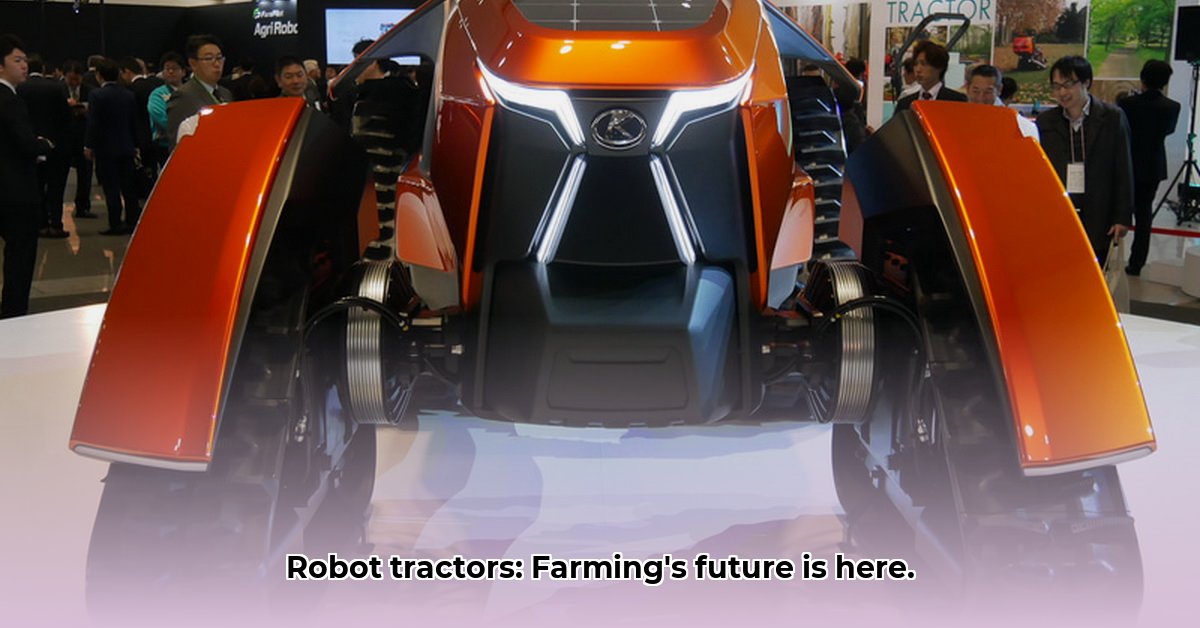
Kubota's Autonomous Tractors: A Technological Deep Dive
Farming faces unprecedented challenges: labor shortages, environmental concerns, and the imperative to increase food production. Kubota, a leader in agricultural machinery, is addressing these issues head-on with its revolutionary autonomous tractors. These aren't just automated tractors; they represent a sophisticated blend of robotics, artificial intelligence (AI), and precision GPS technology, poised to reshape modern agriculture. For more information on Kubota's commitment to innovation, check out their canopy options.
This article explores Kubota's key contributions—primarily the Concept Tractor and the Agri Robo KVT—examining their technological underpinnings, societal impact, challenges, and the future trajectory of this transformative technology.
The Technology: Brains, Brawn, and Precision Guidance
Kubota's autonomous tractors utilize a complex interplay of systems. GPS provides precise location data, guiding the tractor through fields with centimeter accuracy. An array of sensors, including cameras and lidar (a laser-based distance-measuring system), act as the tractor's "eyes," providing real-time information about the environment. This sensory data is processed by sophisticated AI algorithms, enabling the tractor to make real-time decisions, adapt to uneven terrain, and navigate around obstacles. The Agri Robo KVT, for example, stands out with its lighter weight compared to conventional tractors, thereby minimizing soil compaction—a crucial factor in maintaining soil health and long-term sustainability.
However, technological hurdles remain. Unpredictable weather events (heavy rain, fog) and unforeseen obstacles (fallen branches, rocks) can still disrupt operations. Ongoing research focuses on improving the robustness and adaptability of these systems to ensure uninterrupted functionality under diverse conditions.
The Societal Impact: Jobs, Sustainability, and Economic Viability
The introduction of autonomous tractors raises significant questions about their societal impact. One key concern is the potential displacement of human labor. While some tasks will be automated, new specialized roles in technology management, maintenance, and data analysis will likely emerge. The net effect on employment remains a subject of ongoing discussion and analysis.
The environmental benefits are potentially substantial. Precision application of fertilizers and pesticides, achieved through GPS-guided operation, minimizes waste and reduces the environmental footprint of farming. Furthermore, reduced soil compaction and potentially lower fuel consumption (especially with electric or hybrid powertrains) contribute to a more sustainable agricultural model. However, the energy requirements for the electric components of these tractors and the environmental impact of their production and eventual disposal remain important issues to consider.
Economically, the initial high investment cost presents a barrier to entry. However, potential long-term benefits such as increased yields, lower labor costs, and enhanced efficiency may ultimately outweigh the initial investment for many farmers. A thorough cost-benefit analysis, considering factors like farm size and crop type, is crucial for individual farmers to assess economic viability.
Challenges and the Future Outlook: Navigating the Path Ahead
Despite the considerable promise, significant obstacles hinder the widespread adoption of autonomous tractors. Regulatory frameworks for autonomous agricultural machinery are still under development in many jurisdictions, creating uncertainty. Data privacy and security concerns are also paramount, given the substantial amounts of data collected by these interconnected machines.
Reliable infrastructure, including robust cellular and satellite connectivity, is essential for the remote operation and data transmission of these tractors. Addressing the digital divide in rural areas is crucial for facilitating widespread adoption. Furthermore, ensuring the cybersecurity of these systems is critical to prevent malicious attacks and ensure safe operation.
The Collaborative Future: A Shared Vision for Sustainable Agriculture
Kubota's foray into autonomous tractors represents a pivotal moment in the evolution of agriculture. This transition requires a collaborative effort involving technology developers, farmers, investors, and policymakers. Establishing rigorous safety standards, providing comprehensive training programs for farmers, and fostering a supportive policy environment are all critical to ensuring the successful integration of autonomous tractors into modern agriculture. The future of farming will depend not only on technological innovation but also on the collaborative effort to integrate this technology responsibly and effectively into our global food production systems.
Key Features Comparison: Kubota Concept Tractor vs. Agri Robo KVT
| Feature | Kubota Concept Tractor | Kubota Agri Robo KVT |
|---|---|---|
| Autonomy Level | Fully Autonomous | Fully Autonomous |
| Size/Weight | Larger, Heavier | Smaller, Lighter Weight (Reduced Soil Compaction) |
| Power Source | Hybrid or Electric (anticipated) | Battery Powered |
| Implement Capability | Broad range of implements anticipated | Currently focused on specific tasks; expansion expected |
| Key Advantages | Advanced automation, potential for large-scale use | Reduced soil compaction, lower environmental impact, potentially better suited to smaller farms |